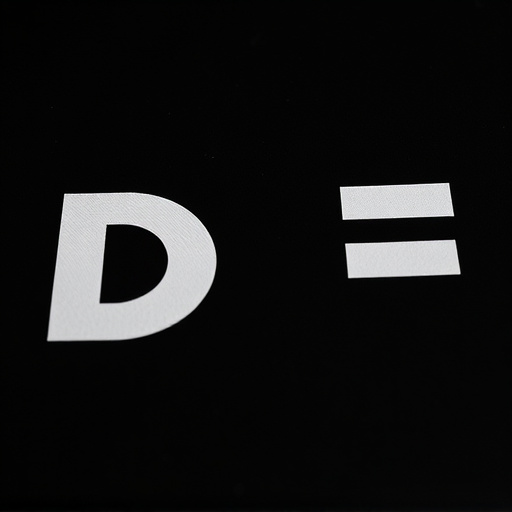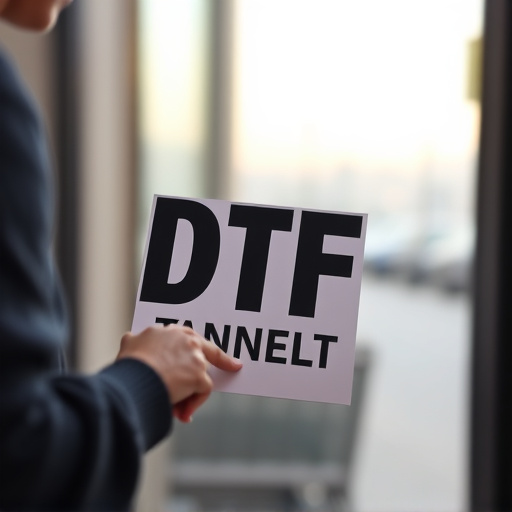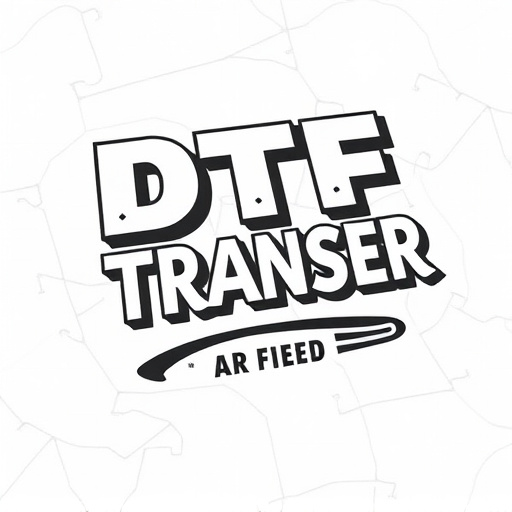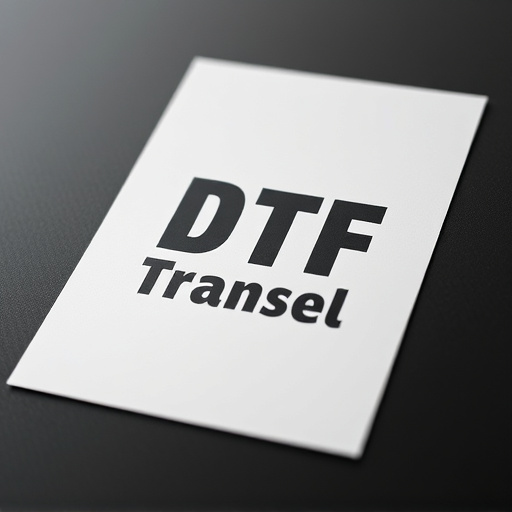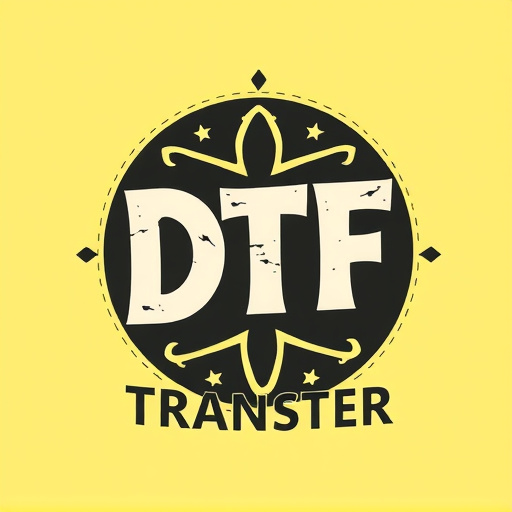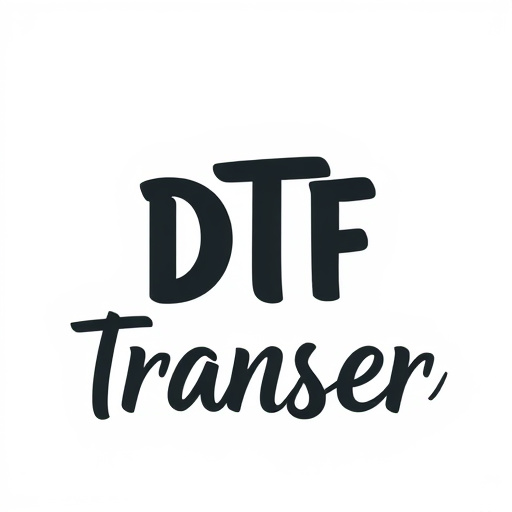Direct-to-film (DTF) transfer is a cutting-edge printing technology offering high-quality, vibrant prints with unmatched precision. It eliminates traditional rollers or plates, speeding up production and reducing costs. DTF's versatility allows printing on various materials like fabric, metal, and wood for advertising, packaging, and signage. Advanced DTF printers use UV curable inks for outdoor durability, while eco-friendly water-based systems are suitable for indoor use. Optimizing workflows and strict Quality Assurance & Control (QAC) protocols ensure top print quality. Real-world case studies demonstrate DTF's success in retail displays and marketing campaigns, showcasing its versatility and reliability for diverse commercial needs.
“Unleash the power of direct-to-film (DTF) transfer production for commercial success. This cutting-edge process revolutionizes printing, offering unparalleled quality and efficiency. Our expert guide explores the transformative potential of DTF for brands, from understanding its unique print process to selecting the perfect technology and materials.
Discover how streamlined workflows enhance productivity while maintaining rigorous quality control. We present real-world case studies, showcasing successful DTF transfers that have left a lasting impression on commercial clients.”
- Understanding Direct-to-Film (DTF) Transfer: A Revolutionary Print Process
- The Benefits of DTF Transfer for Commercial Applications
- Choosing the Right DTF Printing Technology and Materials
- Streamlining Production: Efficient Workflows for DTF Transfer
- Quality Assurance and Control in DTF Print Production
- Case Studies: Successful DTF Transfers for Commercial Clients
Understanding Direct-to-Film (DTF) Transfer: A Revolutionary Print Process

Direct-to-film (DTF) transfer is a cutting-edge print process that’s revolutionizing commercial production. Unlike traditional printing methods, DTF directly applies ink to film, enabling high-quality, crisp prints on various substrates. This innovative technique offers unparalleled precision, vibrant colors, and exceptional detail, making it an ideal solution for demanding commercial applications.
With DTF, businesses can achieve stunning visual effects in advertising, packaging, and signage. The process eliminates the need for intermediate rollers or plates, resulting in faster production times and reduced costs. Moreover, DTF’s versatility allows for printing on unconventional materials like fabric, metal, and wood, opening up a world of creative possibilities for marketing and branding efforts.
The Benefits of DTF Transfer for Commercial Applications

Direct-to-film (DTF) transfer production offers a host of advantages for commercial clients seeking high-quality printing and imaging solutions. This innovative method eliminates many of the traditional limitations associated with direct-to-print technologies, making it an ideal choice for complex designs and large-scale projects. With DTF, images are transferred directly onto various media, such as fabric or metal, using a specialized process that ensures vibrant colors, sharp details, and long-lasting durability.
One of the key benefits is its versatility; DTF Printing allows for the reproduction of intricate patterns and fine line details with remarkable accuracy. This makes it perfect for commercial applications like advertising banners, promotional merchandise, and even fashion design. Additionally, DTF Transfer offers cost-effectiveness, especially for short-run or one-off projects, as it minimizes waste and setup costs compared to traditional printing methods. The result is a powerful and efficient method for businesses to create captivating visual content that leaves a lasting impression.
Choosing the Right DTF Printing Technology and Materials

Selecting the optimal DTF (Direct-to-Film) transfer technology and materials is a pivotal step in achieving exceptional print quality for commercial projects. This process involves evaluating various printing techniques, each with its unique advantages and applications. For instance, advanced DTF printers employing UV curable inks offer vibrant, long-lasting prints suitable for outdoor signage and display graphics. Alternatively, eco-friendly water-based DTF systems are ideal for indoor use, ensuring safe and sustainable production.
The choice of materials is equally critical. High-performance films, designed specifically for DTF printing, provide durability, flexibility, and resistance to fading. These materials come in diverse finishes, allowing designers to select the perfect texture or gloss level to enhance visual appeal. By aligning the chosen DTF transfer technology with project requirements, commercial clients can expect remarkable results, ensuring their prints stand out, whether adorning buildings, enhancing retail displays, or adorning products for branding purposes, thereby creating a lasting impression on audiences.
Streamlining Production: Efficient Workflows for DTF Transfer

In the realm of direct-to-film (DTF) transfer production, streamlining workflows is key to ensuring efficient and high-quality results for commercial clients. Optimized processes for DTF involve a meticulous dance between pre-press preparation, precise printing techniques, and timely post-processing. This involves digital file checks, color proofing, and plate making, all designed to minimize errors and maximize consistency in final DTF prints.
Efficient DTF workflows also hinge on the seamless integration of technology, from initial design input to final product delivery. Automated systems for file management, precise printing presses, and advanced finishing equipment enable faster turnaround times while maintaining exceptional print quality. This streamlined approach not only meets but exceeds client expectations, showcasing the versatility and reliability of DTF transfer production in a competitive market.
Quality Assurance and Control in DTF Print Production

In direct-to-film (DTF) transfer production for commercial clients, Quality Assurance and Control (QAC) are paramount to ensure the highest quality DTF prints. This meticulous process involves a series of checks at each stage of production to identify and rectify any defects or inconsistencies early on. Skilled technicians scrutinize film emulsion, image alignment, color accuracy, and overall print integrity using specialized equipment and software tools designed for DTF printing.
Rigorous QAC protocols include visual inspections, testing with automated equipment, and quality checks against established standards. By implementing these measures, experts can guarantee that each DTF transfer meets or exceeds client expectations. This commitment to excellence ensures that commercial clients receive crisp, vibrant, and perfectly aligned DTF prints suitable for various applications, from signage and display materials to promotional items and branding collateral.
Case Studies: Successful DTF Transfers for Commercial Clients

In the realm of commercial printing and branding, Direct-to-Film (DTF) transfer production has emerged as a game-changer, offering exceptional quality and efficiency. Case studies of successful DTF transfers for commercial clients paint a vivid picture of its potential. For instance, a leading retail brand engaged this technology to create custom, high-resolution prints for in-store displays, resulting in visually stunning and long-lasting graphics that transformed their physical stores into vibrant, bustling hubs of engagement.
Another notable success story involves a marketing agency that utilized DTF printing to produce intricate, detailed logos and designs for various clients. The agency’s ability to deliver swift yet precise DTF prints enabled them to meet tight deadlines, ensuring satisfied corporate clients. These real-world applications underscore the versatility and reliability of DTF transfer technology in catering to diverse commercial needs, from eye-catching retail signage to sophisticated branding solutions.
